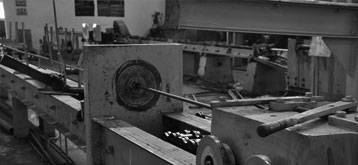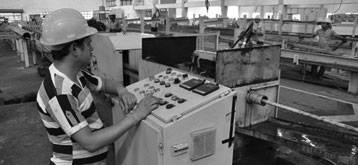
- Mr. Vikram Mehta
- [email protected]
- +91 9619291512









Mother Hollow is taken and coated with Chemical and Soap one by one where a thin layer of soap is formed on the outside and inside surface of the tube. The mother hollow is then drawn with the help of Tungsten Carbide Die and Plug to get the desired diameter and thickness. It is then annealed, straightened, cut, deburred, pickled and passivated. The tubes then undergo a 100% hydro-testing, visual and dimensional examination, 100% PMI testing They are then marked and suitably packed before dispatch.


Mother Hollow is taken and then pilgered with the help of internal men drill and external rolls to get the desired diameter and thickness. Then all pilgered tubes/pipes undergo the digressing an cleaning to remove oil, grease and other foreign particles. It is then annealed, straightened, cut, deburred, pickled and passivated. The tubes then undergo a 100% hydro-testing, visual and dimensional examination, 100% PMI testing, then marked and suitably packed before dispatch.
Stainless Steel Seamless Pipe & Tube is constructed of stainless steel components. There are many different stainless steel grades. The most popular grade of stainless steel is 304, and 304 pipes and tubes are at a reasonable cost.
The size of the pipes change according to ASTM, ASME, and API standards, with specifications in ASTM A213, A249, and A269. Both seamless and welded pipes are available. Stainless steel seamless pipes are more dimensionally reliable than welded pipes. The Stainless Steel Pipe & Tube have nominal bore sizes ranging from 1/8 inch to 30 inches, externally diameters of 0.35mm to 6.35 inches, and wall thicknesses ranging from 0.1mm to 1.2mm.
The two primary processes used in the manufacturing of seamless steel pipes and tubes are cold drawing and hot rolling. Cold-rolled seamless pipes undertake size tests first, then undergo annealing and pickling to ensure quality. Although they are shorter with thinner walls than their hot-rolled counterparts, cold-rolled tubes have a brighter surface finish. On the other hand, prior to being drawn over mandrels at room temperatures where, they are checked for any flaws or defects, after which these products shall undergo heat treatments before final inspection through eddy current testing; this is done on all hot-finished seamless pipe made from continuously cast blooms or billets such as those used for pipeline transportation systems among others because it improves its mechanical properties during subsequent manufacturing processes like bending over machines tools etcetera.
Seamless steel tubes and pipes, no matter the technique used in their production, are made to follow certain specifications. Bigger in diameter and heat-treated once rolled, hot-rolled tubes are examined for more quality assurance through additional experimentation as well as testing, which also happens during the cold rolling process. The outer diameter and wall thickness determine the specifications of seamless steel pipes and tubes; both methods have high dimensional accuracy. For various industrial uses such as mechanical components or fluid transportation pipelines, among others, where reliability matters most then, seamless steels should be your best choice since they offer a solution that is not only dependable but also long-lasting.
Copyright © 2015 MBM TUBES PVT LTD. All rights reserved.
Design & Promoted by www.rathinfotech.com